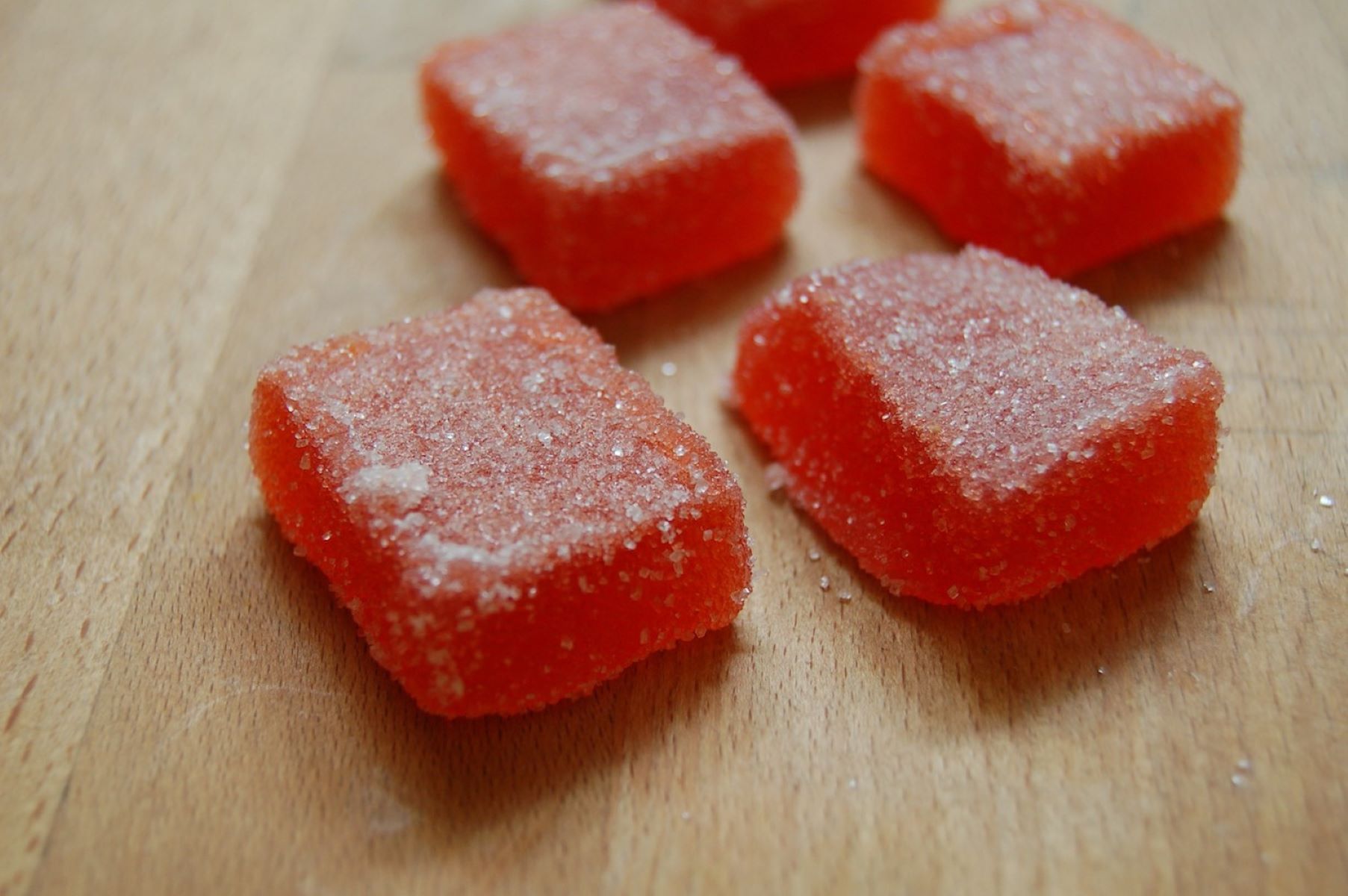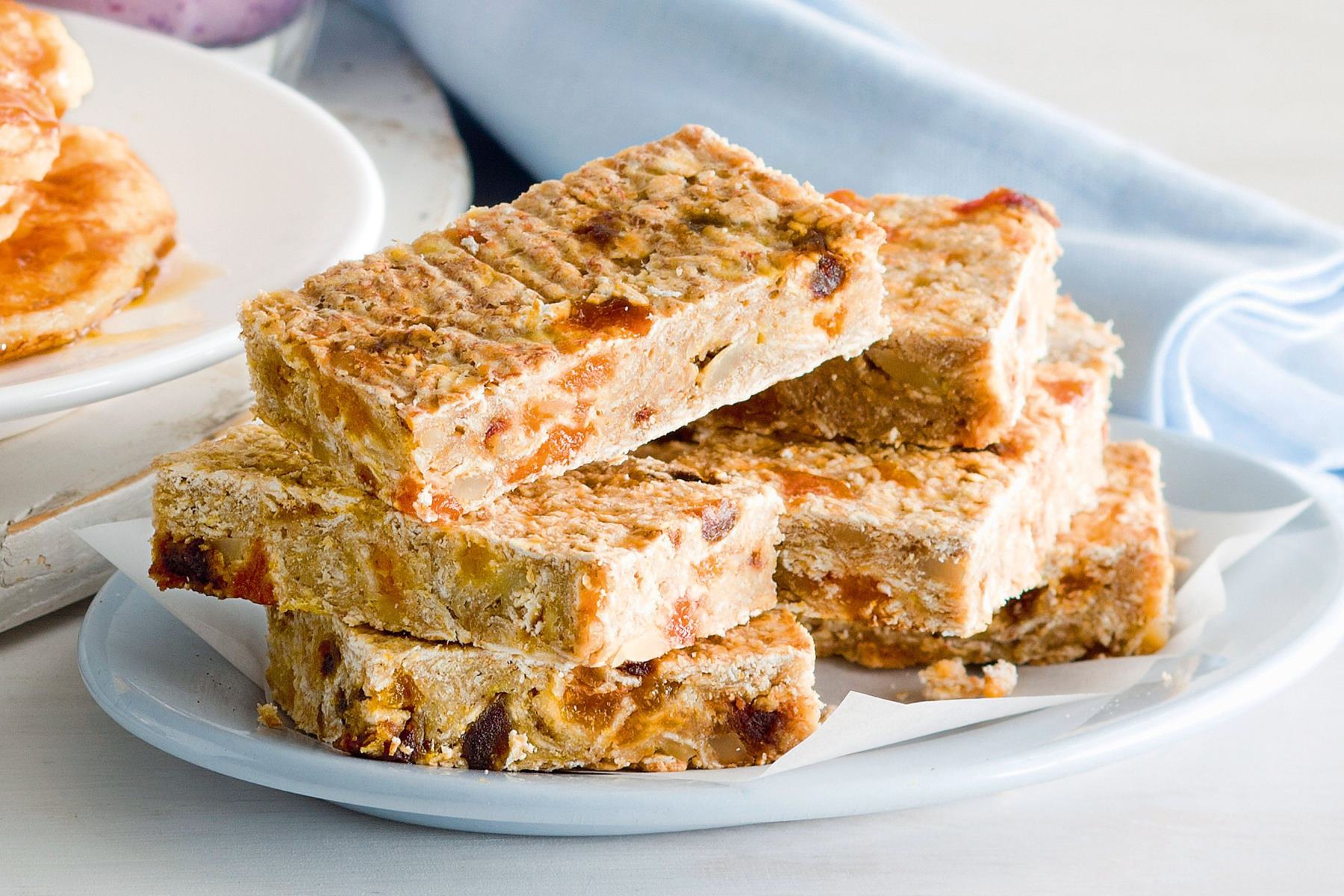Home>Health & Nutrition>Comparing Energy Gels And Jelly Sweets For Running


Health & Nutrition
Comparing Energy Gels And Jelly Sweets For Running
Published: February 22, 2024
Discover the best fuel for your run with our comparison of energy gels and jelly sweets. Learn how to optimize your health and nutrition for peak performance.
(Many of the links in this article redirect to a specific reviewed product. Your purchase of these products through affiliate links helps to generate commission for Therunningadvisor.com, at no extra cost. Learn more)
Table of Contents
Introduction
When it comes to fueling your body for a long run or intense workout, the options seem endless. Among the myriad of choices, energy gels and jelly sweets stand out as popular choices for providing a quick energy boost during physical activity. Both options offer convenient and portable sources of carbohydrates, but they differ in their nutritional content, effectiveness for sustaining energy, digestibility, and overall convenience.
In this article, we will delve into the nutritional content of energy gels and jelly sweets, comparing their effectiveness in sustaining energy levels during exercise. We will also explore the differences in digestibility and the potential for gastrointestinal distress associated with each option. Additionally, we will examine the convenience and portability of these products, as well as their cost comparison.
By the end of this comprehensive comparison, you will have a clearer understanding of the benefits and drawbacks of energy gels and jelly sweets, empowering you to make an informed decision about which option best suits your individual needs and preferences. So, let's dive into the nutritional breakdown and performance of these two popular choices for fueling your runs and workouts.
Nutritional Content of Energy Gels
Energy gels are designed to provide a concentrated source of carbohydrates and electrolytes in a convenient, easy-to-consume form. Typically, a single serving of an energy gel contains around 25 grams of carbohydrates, primarily in the form of simple sugars such as glucose, fructose, and maltodextrin. These rapidly digestible carbohydrates are essential for quickly replenishing glycogen stores and providing an immediate energy boost during endurance activities like running.
In addition to carbohydrates, energy gels often contain electrolytes such as sodium and potassium, which play crucial roles in maintaining fluid balance, muscle function, and nerve signaling during prolonged exercise. These electrolytes help replace the sodium lost through sweat and aid in preventing dehydration and muscle cramping, especially in hot and humid conditions.
Some energy gels also include caffeine, a natural stimulant that can enhance mental alertness and reduce perceived exertion during exercise. Caffeine has been shown to improve endurance performance and delay fatigue by stimulating the central nervous system and increasing the release of adrenaline, which can help athletes push through tough workouts or races.
Furthermore, energy gels are typically low in fat and protein, as these macronutrients can slow down digestion and absorption, potentially causing gastrointestinal discomfort during intense physical activity. By focusing on carbohydrates and electrolytes, energy gels deliver a rapid source of energy without burdening the digestive system, making them an efficient choice for fueling endurance exercise.
It's important to note that the specific nutritional composition of energy gels can vary between brands and flavors, so it's essential to read the labels carefully to ensure that the product aligns with your individual nutritional needs and preferences. Additionally, some energy gels are formulated with added vitamins, amino acids, or antioxidants to provide extra support for overall performance and recovery.
In summary, energy gels are designed to deliver a concentrated dose of carbohydrates and electrolytes in a convenient, easily digestible form. Their nutritional profile is tailored to support rapid energy replenishment and hydration during endurance activities, making them a popular choice for athletes and fitness enthusiasts seeking a quick and efficient fuel source during long runs and intense workouts.
Nutritional Content of Jelly Sweets
Jelly sweets, often known for their delightful taste and chewy texture, are a popular choice for individuals seeking a quick and enjoyable source of energy during physical activity. While they may not seem like a traditional sports nutrition product, jelly sweets can offer a convenient alternative to energy gels for fueling workouts and long runs.
In terms of nutritional content, jelly sweets primarily consist of carbohydrates in the form of sugars, such as glucose, sucrose, and fructose. These simple sugars provide a rapid source of energy, making jelly sweets an appealing option for a quick energy boost. However, it's important to note that the carbohydrate content in jelly sweets may vary depending on the specific type and brand.
Unlike energy gels, jelly sweets typically do not contain electrolytes or added vitamins and minerals. This means that they may not provide the same level of support for hydration and electrolyte balance during prolonged exercise. Additionally, jelly sweets are generally low in fat and protein, focusing primarily on delivering a concentrated source of carbohydrates.
One potential drawback of jelly sweets is their higher sugar content compared to energy gels. While the quick energy from sugars can be beneficial during intense physical activity, the rapid spike in blood sugar levels may be followed by a crash, potentially leading to a dip in energy levels. This fluctuation in blood sugar can impact performance and may not provide sustained energy for longer workouts or endurance activities.
Furthermore, the lack of electrolytes in jelly sweets means that they may not effectively support hydration and muscle function during extended exercise sessions. Electrolytes play a crucial role in maintaining fluid balance and supporting muscle contractions, making them essential for sustained performance and recovery.
In summary, jelly sweets offer a convenient source of carbohydrates for quick energy during physical activity. However, they may lack the added electrolytes and nutritional support found in energy gels, potentially impacting their effectiveness for sustaining energy levels and supporting hydration during prolonged exercise. While jelly sweets can be a tasty and accessible option for short bursts of activity, they may not provide the comprehensive nutritional support needed for longer endurance activities and intense workouts.
Effectiveness for Sustaining Energy
When comparing the effectiveness of energy gels and jelly sweets for sustaining energy during physical activity, several key factors come into play. Both options are designed to provide a quick source of carbohydrates, which serve as the primary fuel for muscles during exercise. However, the differences in their nutritional composition and impact on blood sugar levels can influence their effectiveness in sustaining energy over the course of a workout or long run.
Energy gels, with their concentrated blend of carbohydrates and electrolytes, are specifically formulated to deliver a rapid and sustained source of energy during endurance activities. The combination of simple sugars, such as glucose and fructose, provides a quick energy boost, while the addition of electrolytes supports hydration and muscle function. This comprehensive nutritional profile makes energy gels an effective choice for maintaining energy levels and preventing fatigue during prolonged exercise.
In contrast, jelly sweets, while offering a quick source of carbohydrates, may not provide the same level of sustained energy due to their higher sugar content and lack of added electrolytes. The rapid spike in blood sugar levels from consuming jelly sweets can lead to a quick burst of energy, but it may be followed by a subsequent drop, potentially impacting energy levels during extended physical activity.
Furthermore, the absence of electrolytes in jelly sweets means that they may not effectively support hydration and muscle function, which are essential for sustaining energy and performance during longer workouts or endurance activities. Without the added electrolyte support, jelly sweets may fall short in providing the comprehensive nutritional backing needed for sustained energy levels.
In summary, when evaluating the effectiveness for sustaining energy, energy gels emerge as a more comprehensive and purpose-built option for endurance activities. Their balanced blend of carbohydrates and electrolytes supports sustained energy levels, hydration, and muscle function, making them a preferred choice for athletes and fitness enthusiasts seeking a reliable source of energy during prolonged exercise. While jelly sweets offer a quick energy boost, their higher sugar content and lack of added electrolytes may limit their effectiveness in sustaining energy over extended periods of physical activity.
Digestibility and GI Distress
When it comes to fueling your body for physical activity, the digestibility of the chosen source of energy plays a crucial role in determining its effectiveness. Digestibility refers to how easily and efficiently the body can break down and absorb nutrients from a given food or supplement. In the context of energy gels and jelly sweets, the impact on gastrointestinal (GI) distress is a key consideration, as it can significantly affect an individual's comfort and performance during exercise.
Energy gels are formulated to be easily digestible, allowing for rapid absorption of carbohydrates and electrolytes without burdening the digestive system. The concentrated blend of simple sugars in energy gels is designed for quick uptake and utilization by the body, making them an efficient source of readily available energy during physical activity. Additionally, the low fat and protein content in energy gels minimizes the risk of GI distress, as these macronutrients can slow down digestion and potentially cause discomfort during exercise.
In contrast, the digestibility of jelly sweets may vary depending on individual tolerance and the specific composition of the product. While jelly sweets provide a quick source of carbohydrates, their higher sugar content and potential for added ingredients such as gelatin and artificial colors may impact some individuals' digestive systems. The rapid influx of sugars from jelly sweets can lead to GI distress in some cases, particularly during intense physical activity when blood flow is directed away from the digestive organs to the working muscles.
Furthermore, the lack of added electrolytes in jelly sweets may contribute to GI distress, as maintaining proper fluid balance and electrolyte levels is essential for supporting digestion and minimizing discomfort during exercise. Without the added electrolyte support found in energy gels, jelly sweets may pose a higher risk of GI distress for some individuals, especially during longer workouts or endurance activities.
In summary, the digestibility and potential for GI distress associated with energy gels and jelly sweets are important factors to consider when choosing a fuel source for physical activity. Energy gels are designed for efficient digestion and minimal GI discomfort, making them a reliable option for sustaining energy during exercise. While jelly sweets offer a quick source of carbohydrates, their higher sugar content and potential lack of added electrolytes may pose a greater risk of GI distress for some individuals, highlighting the importance of individual tolerance and nutritional considerations when selecting a fueling option for physical activity.
Convenience and Portability
Convenience and portability are essential considerations when selecting fueling options for physical activity, especially for endurance athletes and individuals engaging in long runs or intense workouts. The ease of carrying and consuming a fuel source can significantly impact an individual's overall experience and performance during exercise.
Energy gels are renowned for their compact and portable packaging, typically presented in single-serve sachets that can be easily tucked into a pocket or waistband. This convenient packaging allows athletes to carry multiple servings without adding bulk or weight to their gear, making energy gels an ideal choice for on-the-go fueling during races, training runs, or other endurance activities. The tear-off tops and easy-to-consume gel consistency further enhance the convenience of energy gels, enabling quick and hassle-free consumption without the need for additional water or preparation.
In contrast, the portability of jelly sweets may vary depending on the packaging and individual preferences. While some jelly sweets come in resealable pouches or small containers, others may require additional storage solutions to prevent spilling or melting during exercise. The need for careful handling and potential for stickiness can impact the overall convenience of jelly sweets, especially in warmer conditions or when space is limited. However, the appeal of jelly sweets lies in their familiar and enjoyable format, offering a tasty and approachable option for individuals seeking a more traditional snack-like fuel source during physical activity.
When comparing the convenience and portability of energy gels and jelly sweets, it's evident that energy gels excel in terms of practicality and ease of use during endurance activities. Their compact packaging, tear-off tops, and no-fuss consumption make them a favored choice for athletes and fitness enthusiasts looking for a streamlined and efficient fueling solution. While jelly sweets offer a familiar and enjoyable option, their potential for messiness and varied packaging may impact their overall convenience, requiring additional consideration for on-the-go use.
In summary, convenience and portability play a significant role in the selection of fueling options for physical activity. Energy gels stand out for their practical and portable design, offering a hassle-free solution for on-the-go fueling during endurance activities. While jelly sweets provide a familiar and enjoyable alternative, their packaging and potential for messiness may require additional attention to ensure convenient and portable use during exercise.
Cost Comparison
When evaluating the cost comparison between energy gels and jelly sweets, it's essential to consider the financial aspect of incorporating these fueling options into a regular exercise routine. The pricing of energy gels and jelly sweets can vary based on factors such as brand, quantity, and specific formulations, influencing the overall affordability and value for individuals seeking a reliable source of energy during physical activity.
Energy gels are typically sold in individual single-serve packets, with prices varying based on the brand, ingredients, and additional features such as added caffeine or specialty formulations. The cost per serving of energy gels can range from approximately $1 to $3, depending on the specific product and purchasing options. While the initial investment in energy gels may seem higher compared to other fueling options, their concentrated and purpose-built composition provides a targeted source of carbohydrates and electrolytes, offering value in supporting endurance performance and energy replenishment during exercise.
On the other hand, jelly sweets are often available in larger quantities, such as bags or containers, with prices reflecting the volume and brand reputation. The cost per serving of jelly sweets tends to be lower compared to energy gels, typically ranging from a few cents to around $0.50 per serving, depending on the specific product and packaging size. While jelly sweets offer an economical option for quick energy during physical activity, it's important to consider their nutritional composition and potential impact on sustained energy levels, as well as the added cost of sourcing electrolytes and additional hydration support separately.
When comparing the cost of energy gels and jelly sweets, it's crucial to weigh the upfront pricing against the overall nutritional value and effectiveness for supporting energy and performance during exercise. While energy gels may have a higher initial cost per serving, their targeted formulation and added electrolytes can provide comprehensive support for endurance activities, potentially offering long-term value in sustained performance and energy replenishment. On the other hand, jelly sweets may present a more budget-friendly option for quick energy, but their lack of added electrolytes and potential impact on blood sugar levels may necessitate additional considerations for supporting hydration and sustained energy, potentially affecting the overall cost-effectiveness.
In summary, the cost comparison between energy gels and jelly sweets encompasses not only the upfront pricing but also the nutritional value and effectiveness for supporting energy and performance during physical activity. While energy gels may have a higher initial cost per serving, their targeted formulation and added electrolytes can provide comprehensive support for endurance activities, potentially offering long-term value in sustained performance and energy replenishment. Conversely, jelly sweets may present a more budget-friendly option for quick energy, but their lack of added electrolytes and potential impact on blood sugar levels may necessitate additional considerations for supporting hydration and sustained energy, potentially affecting the overall cost-effectiveness.
Conclusion
In conclusion, the comparison between energy gels and jelly sweets reveals distinct differences in their nutritional content, effectiveness for sustaining energy, digestibility, convenience, portability, and cost. Energy gels emerge as a purpose-built and comprehensive option for fueling endurance activities, offering a concentrated source of carbohydrates and electrolytes in a convenient, easily digestible form. Their balanced blend of simple sugars and added electrolytes supports sustained energy levels, hydration, and muscle function, making them a favored choice for athletes and fitness enthusiasts seeking a reliable source of energy during prolonged exercise.
On the other hand, jelly sweets provide a quick and enjoyable source of carbohydrates, but their higher sugar content and lack of added electrolytes may limit their effectiveness in sustaining energy over extended periods of physical activity. While jelly sweets offer a familiar and approachable option, their potential for messiness and varied packaging may impact their overall convenience, requiring additional consideration for on-the-go use during exercise.
When considering the cost comparison, energy gels may have a higher initial cost per serving, but their targeted formulation and added electrolytes can provide comprehensive support for endurance activities, potentially offering long-term value in sustained performance and energy replenishment. Conversely, jelly sweets may present a more budget-friendly option for quick energy, but their lack of added electrolytes and potential impact on blood sugar levels may necessitate additional considerations for supporting hydration and sustained energy, potentially affecting the overall cost-effectiveness.
Ultimately, the choice between energy gels and jelly sweets depends on individual preferences, nutritional needs, and the specific demands of the physical activity. Athletes engaging in prolonged endurance activities may benefit from the comprehensive support provided by energy gels, while individuals seeking a quick energy boost for shorter workouts or recreational runs may find the familiar and accessible nature of jelly sweets appealing.
It's important for individuals to consider their unique nutritional requirements, tolerance to different fuel sources, and the duration and intensity of their physical activities when selecting between energy gels and jelly sweets. By making an informed decision based on these factors, individuals can optimize their fueling strategy to support their performance, comfort, and overall enjoyment during exercise.















